
80% rye
Hello,
I have not made very many high-concentration Rye's, but I do like that you can make 'em in a day. But then you have to wait a long time before cutting into them. So I guess it's all the same. In any case, here is the bake for today. It is an 80% rye, 25% of it being what I refer to as my own "chunky rye stuff" -- milling rye berries beyond the Grob level of my Komo miller. It results in a mixture of chunks of berries and meal.
Last week I attempted a similar bread but heavily favored towards a mash in the dough and not a lot of acidified levain flour, and the loaf literally collapsed in the oven, half way through the bake. :) For this bread, I did not do a mash, because I was not up to a mash experimentation mood after the last rye failure, and also a friend expressed desire for a high concentration rye bread and I didn't want to mess it up too much, so this bread is for him. I did a room-temp soaker though, with the chunky rye + rye flour, and increased the percentage of levain. This one did not collapse on me. :)
Here was the recipe I made, and pictures. (Sorry, no crumb shot yet, and apologies for so many pictures). Yes I did use baker's yeast, but in retrospect, I don't think that was needed. All weights in grams.
Total Dough Weight: 2000
Total Dough Hydration: 80%
Total Dough Flour Weight: 1111
Total Dough Water Weight: 889
Percentages:
Levain Percentage: 35%
Levain Hydration: 125%
Starter Percentage: 10% of levain
Starter Hydration: 125%
Soaker Percentage: 36%
Soaker Hydration: 100%
Soaker Salt Percentage: 1%
Final Dough Salt Percentage: 1.5%
Baker's Yeast Percentage: 1.5%
Levain:
Whole Rye Flour Weight: 372
Water Weight: 465
Starter Weight: 39
Soaker:
Chunky Rye Stuff Weight: 278
Whole Rye Flour Weight: 122
Water Weight: 400
Salt Weight: 4
Final Dough:
All Levain
All Soaker
Whole Rye Flour: 100
Strong White Flour: 222
Salt Weight: 13
Baker's Yeast Weight: 17
Here is the soaker on the left, the levain on the right:
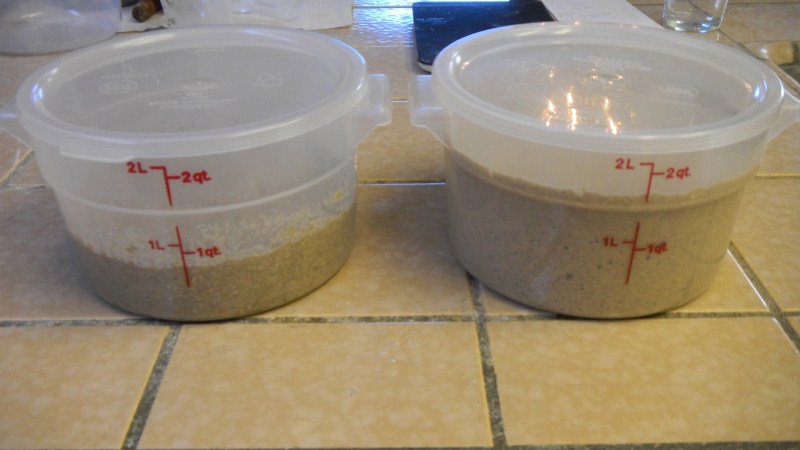
Closeup of levain:
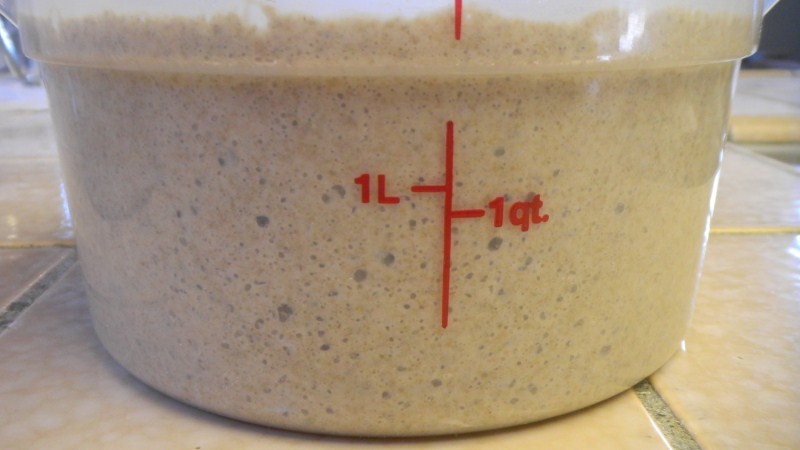
Another closeup of levain. It was a little bit past ripened as you can tell from the receeding, but still OK:
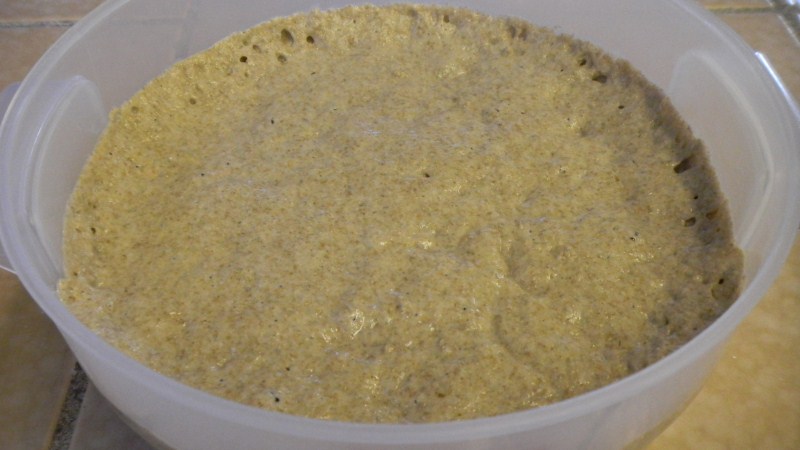
Here is the Chunky Rye Stuff + Whole Rye Flour soaker:
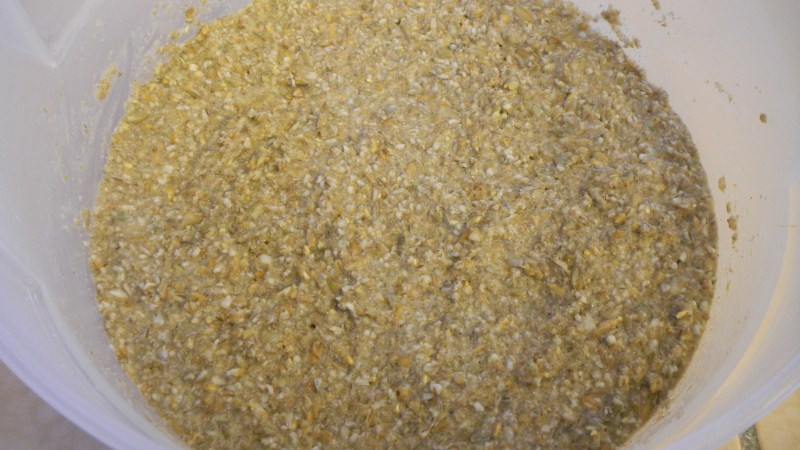
Here is the final dough after mixing. I wasn't expecting any kind of dough ball to form. I had to alternate between the Paddle and the Hook, several times, to get everything mixed thoroughly. Probably should have simply used my fingers, in retrospect. The dough Hook is pretty much useless in the beginning.
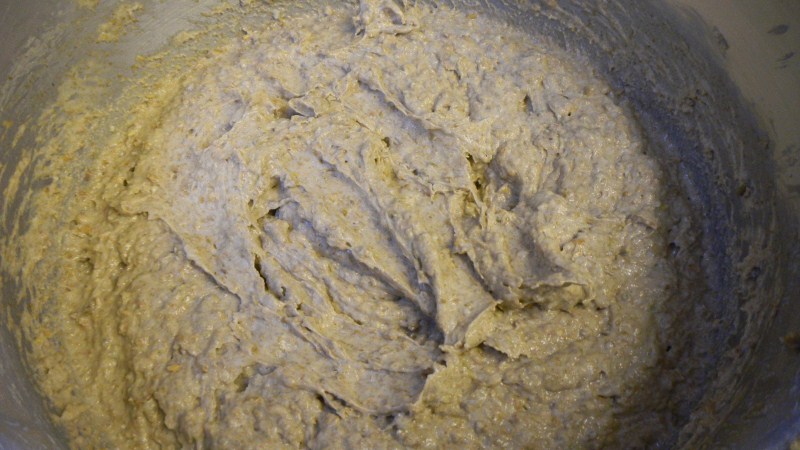
I got most of it in the Pullman pan. I'd say about 90% of the dough. I was worried it was too much for this size of pan. The rest of the dough I tossed. I smushed it in the pan with wet hands and smoothed out the top.
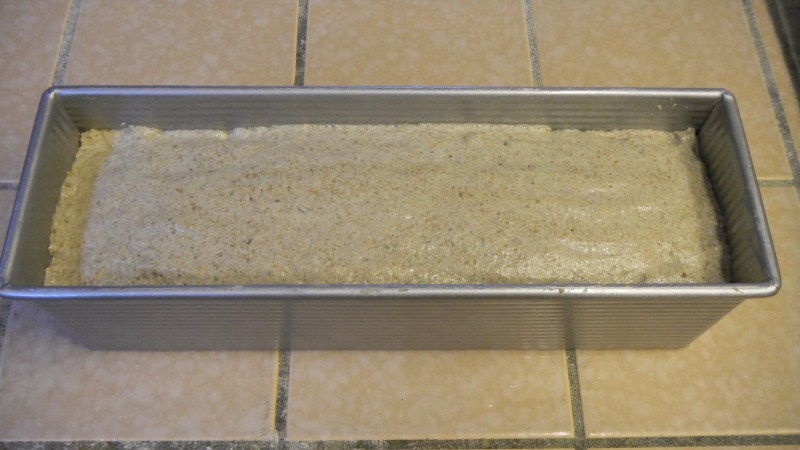
Baking, after the 1st 15 mins of steam:
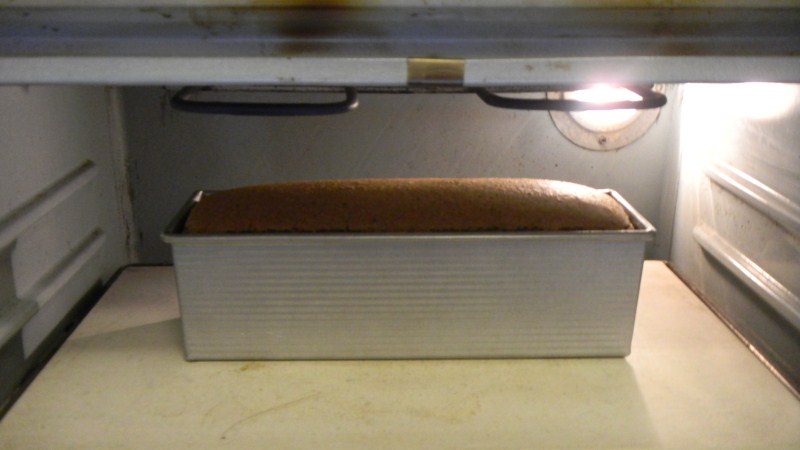
Here's the final result minus the crumb picture:

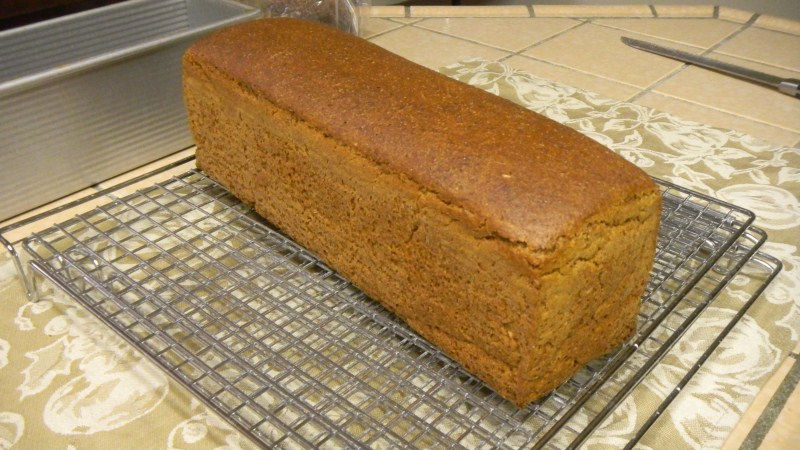
I baked it at 475F for the first 15 mins, then lowered to 380F for 75 minutes. Internal temp registered 207F.
In the latter stages of baking, the kitchen became full of such a strong, powerful Rye aroma, it should have been illegal. :)
If I can get a crumb shot I'll update tomorrow.
Happy baking!


Comments
gvz,
Your loaf looks spectacular! What a change from your last one.
I hear you on mash experiments...I tried one last week and the squirrels, birds and foxes were the happy recipients. :-)
I will have to try your new formulation as it looks superb.
Did you allow for any bulk fermenting or did the dough go straight into the pan for proofing? How long did you let it proof - if you let if proof????
I love that you posted lots of pictures too. Really helps to have an idea of what something is looking like when being described by words.
I also appreciate how you posted all of the %'s. Makes it a lot easier to grasp and tweak to different pan sizes. Is the Pullman Pan you used the larger one? (13"x4")
On yeast: I have found that a bit of IY does help out on some SD loaves as it helps the dough hold it's strength. My current rule of thumb is 1g per 1000g total dough weight but that figure changes if there is a lot of sugar or cinnamon in the recipe.
Take Care,
Janet
Hi Janet,
Thank you for your nice reply.
I guess I am a squirrel or fox, because even my failures I eat. Mostly anyway. :) :)
For today's bread, after mixing, I left it in the mixing bowl for 30 mins for "bulk ferment", and to my surprise, it had nearly tripled in volume. I chalked it up to the addition of baker's yeast. This is why I said I don't think it is necessary.
After I poured/scooped it into the Pullman pan, smoothed it out, etc., given the previous big rise in 30 mins in the mixing bowl, I was really worried I put too much in the pan. I was concerned it was going to rise too much and then blob all over the place. So I watched it closely. After appx 20 mins, it was cresting the pan. So then I baked it.
Honestly I thought it was going to rip itself apart but it came out ok.
Next time I might withhold the baker's yeast. I am not used to breads rising so fast. But, for this kind of bread, maybe it's OK. I am totally wanting to cut into it to see the crumb tonight, but I am not... :)
Thanks for the details above and below gvz. I thought it looked like a 13".
Now I will know how to adjust and will give this a go :-)
Take Care,
Janet
P.S. Kids used to eat anything I baked but as my baking has progressed they have become more selective....me thinks their palates are improving....but then me also thinks they are spoiled by daily fresh bread.....the animals haven't turned selective on me yet :-)
Dimensions of Pan, for Janet:
13.5 inches long
4.5 inches wide
4.0 inches tall
Hi gvz,
Firstly, what a great loaf; I bet you can't wait to cut into it!
I don't think you need to be using any added baker's yeast here. Such a short bulk time and already the paste had risen that much; you don't need the insurance policy!
I find that just a little under 2000g of paste is great for these Pullman Pans [mine has the same dimensions] although proof level tends to be affected as much by choice of flour grade as anything else.
Can I offer a few thoughts on the make up of a rye paste, to try to encourage you with the mash. You make wonderful mash breads and there is no reason why the principles cannot be applied to rye breads.
The collapse you experienced in the loaf is probably due to high amylase activity in the latter stages of proof, and you are right to suspect a mash would be a potential cause. However, if you work with a much more sour leaven, then you can avoid this problem. Rye paste relies on the fibrous pentosans to knit the starches together; it does not have any elastic-like gluten properties, although it does contain small amounts of poor quality gluten.
In the latter stages of proof and early stages of baking, these pentosans have a tendency to become very unstable, causing the loaf to collapse. Using a sour rye culture helps to prevent this happening as the acid helps to prevent the pentosans from breaking down. Additionally, of course, the high acid content is a useful preservative which delays mould formation; this is crucial in breads such as these, where hydration levels are upwards of 80%
Awesome; I look forward to the crumb shots
Best wishes
Andy
Thanks, Andy.
Stand tall, stand proud - that is what the loaf is saying to me.
Nicely done.
Nicely done, gvz. I'm looking forward to seeing the crumb.
Alan
That's a lovely looking loaf. I can't wait to see the crumb shot.
Best,
Syd
After waiting 24 hrs (had it wrapped in paper towels, only thing I had available), I finally cut into it. Crumb is very moist, the crusts are a little on the hard side. I am hoping it will soften a bit after being wrapped in a plastic bag. I may have baked either too hot or too long, not sure which. Crumb is a little denser near the bottom. The flavor is bold, strong rye, and not too sour either, which is good. Overall, I am happy. I am sure my friend who I gave this to will enjoy it.
It looks quite porous for a 80% whole rye.
Please, if you make this loaf again (for example without added yeast as you suggest), could you take a photo of how the dough looks like just before going to the oven? Although my rye breads are not bad I am still struggling with determing when it is enough but not too much proofed. Thank you very much!
zdenka
Hi zdenka,
Yes, if/when I do this one again, I'll take a picture just prior to loading into the oven. It was basically just cresting the top of the pan before I baked.
Fortunately, the crust softened after being wrapped in plastic. My friend's been having it daily for breakfast with smoked salmon and good cream cheese, and today for lunch he grilled it with some spiced ribeye, mustard and cheese. Said it was awesome. Yay. :)
Hello gvz,
Your loaf rose well and I think it looks really good with its nice, rounded top.
:^) from breadsong